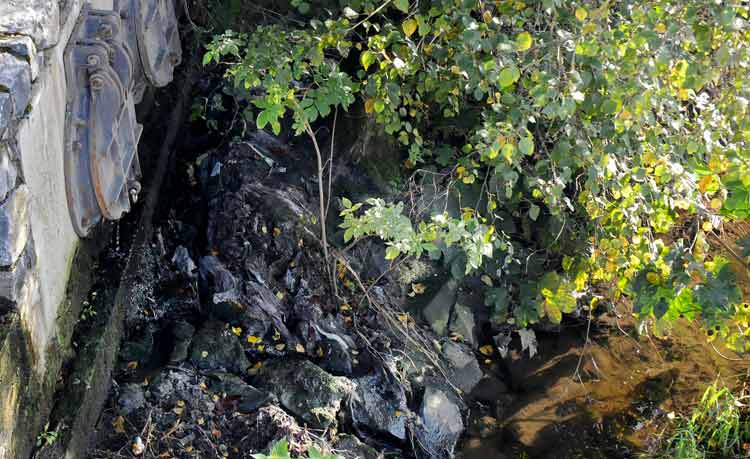The bathing season in Ireland, is designated as being from 1st June to 15th September each year. From 2014 onwards bathing water compliance requires assessments to be undertaken using a statistical methodology using data covering a four year period as opposed to previous annual assessments based on percentage compliance.
Bathing areas are currently classified in one of four categories namely ‘Excellent’, ‘Good’, ‘Sufficient’ or ‘Poor’. The mandatory requirement is for ‘Sufficient’ quality. Any waters graded as ‘Poor’ require that management measures be put in place to identify and eliminate the sources of pollution.

The 142 identified bathing waters are either coastal or inland waters, widely used by the public for bathing and are monitored, managed and assessed under the requirements of the 2008 Bathing Water Quality Regulations.
- Nearly three quarters of Ireland’s bathing waters are of ‘Excellent’ quality, however seven of our beaches failed to make the grade.
- Some 93% of identified bathing waters (or 132 of 142), have met minimum EU standards.
- Almost three quarters of bathing waters (or 102 of 142), were classified as ‘Excellent’, while a further 18 were classified as ‘Good’.
- Seven coastal bathing waters failed to meet the minimum mandatory standard and were classified as ‘Poor’. Five of these are in the Co. Dublin area (Sandymount and Merrion Strands, Loughshinny, Portrane and Rush South). The other two were in Co. Galway at Ballyloughane and Clifden.
- Trá na BhForbacha improved and moved from ‘Poor’ to ‘Sufficient’ quality in 2017.
- Three other beaches also showed improved performance in 2017.
16th May 2018: An Environmental Protection Agency (EPA) report, [Bathing Water Quality in Ireland 2017], has found that the overall quality of Ireland’s bathing waters remains good with 132 of 142 identified waters meeting strict EU standards. These standards provide a high level of protection for bathers. Nearly three quarters of bathing waters were classed as ‘excellent’ with 102 beaches and bathing waters meeting the standard – the same number as in 2016. However, seven coastal bathing waters failed to meet the minimum standard and are classified as poor.
Mr Andy Fanning, (Programme Manager of the EPA’s Office of Evidence and Assessment) stated:-
“Our assessment shows that urban beaches are under greater pressure that those in more rural locations. More needs to be done to eliminate the sources of bacterial contamination that are particular to urban locations. The main issues are misconnections to surface water drains and other run off from urban environments, together with sewage discharges. Work is needed by local authorities, Irish Water, businesses and homeowners to ensure that contaminated waste water is correctly collected and treated before being released into the environment.”
The 2017 reports findings are as stated above, however 12 bathing areas (7.1%) were classified as being of ‘Sufficient’ water quality, but remain at risk of episodic pollution events.
Seven bathing waters (4.9%) failed to meet the minimum required standard and were classified as being of ‘Poor’ quality. Sandymount Strand joined the list in 2017 after being classified as sufficient in 2015 and 2016. The EPA report shows that these waters are all vulnerable to pollution events. The relevant local authorities, in conjunction with Irish Water, have plans in place to tackle the main pollution risks at these beaches with a view to improving them to at least ‘Sufficient’ quality.
There are 3 new beaches designated for protection under the Bathing Water Regulations. Dooey and Magheroarty (Co. Donegal) with Seafield Quilty (Co. Clare), are to be formally classified in 2018.
Mr Peter Webster, (EPA Senior Scientific Officer) stated,
“Ireland has many beautiful beaches and some inland bathing waters with excellent water quality. The report covers the 142 EU identified bathing waters. It also provides details of over 80 other waters where bathing occurs and which are monitored by local authorities. While these 80 waters are not covered by the Regulations they are monitored by the local authorities because bathing or recreational activities are known to take place there and it is important to let the public know about their water quality. We would like to see many of them in the national monitoring programme in the future.”
Concluding; Mr Peter Webster explained how the public can access current information about bathing water quality:
“During the summer, current water quality information and details of any incidents affecting bathing waters will be displayed on the website www.beaches.ie. If you are heading to the beach with your family or friends, it is advisable to check beaches.ie or the Twitter notification service, @EPABeaches, before heading out. When you get to the beach you should always check the local notice board for information on current water quality.”
The summary report ‘Bathing Waters in Ireland 2017’ and map of the quality of Ireland’s Bathing water sites are available on the EPA website.

Leave a Reply